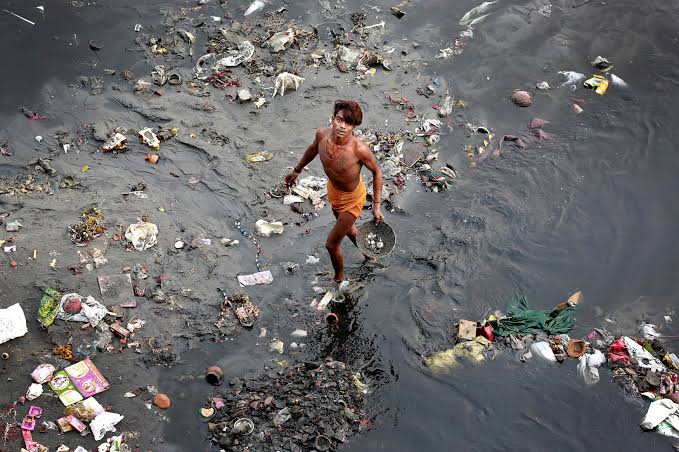Humans supersede the usage of natural resources available to them. Water being one of the most precious and non-renewable resources and is considered as the ‘new gold’ its scarcity is becoming a rising concern. However, we continue to treat the major components of Earth’s oceans, lakes, rivers, and living organisms as a dispensable commodity. The total amount of Freshwater in the world is only 2.5% of the total water available on this planet.
Have you ever wondered how humans contribute to nature?
Don’t worry, here is an insight for you. Did you know – we are the biggest contributor to waste production, on average around 18 billion pounds (8.16 billion kilograms) of garbage is dumped into the ocean every year and globally, according to records 80 percent of municipal wastewater is left untreated and dumped in the environment. We’re the ones to be blamed and the worst sufferers. People run after gold, but water is more precious, and it’s high time that we understand this for a better future. It is said that one destroys life when they waste water.

According to the latest survey – 3.5 billion people in 2025 will face water shortage issues around the world. The reason for this scarcity is water pollution. The expansion in population and the coming up of more and more industries will lead to further water contamination.
- Here are some facts and figures on water pollution and how the face of the Earth can change in the future if we don’t put a stop to harmful human activities causing water pollution because everything we do always comes back to us.
- Water pollution kills around 10,000 people around the world every day – that’s 3.6 million people every year; it is one of the biggest global killers.
- Every eight seconds, a child under the age of five dies from diseases related to contaminated water.
- Lake Karachay, in Russia, is considered the most contaminated and polluted lake on the planet.
- There are more microplastics in our oceans than stars in the Milky Way.
- 46 per cent of plastic produced on the planet floats.
- The Great Pacific Garbage Patch, a continent made from plastic trash, is thought to be 386,000 square miles, i.e., an area bigger than Texas.
- The Mississippi River carries about 1.5 million metric tons of nitrogen pollution into the Gulf of Mexico each year, creating a “dead zone” in the Gulf each summer about the size of New Jersey.
- The most important water contaminants created by human activities are microbial pathogens, nutrients, oxygen-consuming materials, heavy metals and persistent organic matter, as well as suspended sediments, nutrients, pesticides and oxygen-consuming substances, much of it from non-point sources
- Two of the major contributors to water pollution are the leather and thechemical industries.
- In India alone, at least 1000 children die because of the consumption of contaminated water every day.
- Asia has the highest concentration of contaminated rivers as compared to the other continents.
- The most polluted river in the world is the Ganges, in India. They contaminate it with industrial waste, human waste, and dead bodies of humans and animals.
- Aquatic animals go extinct nearly five times more than terrestrial animals.
- They estimate that at least 50% of the sea turtles, 44% of all seabirds, 22% of cetaceans, and a variety of fishes have already consumed plastics.
- In 2010, the BP oil spill handled the deaths of thousands of animals, including birds, turtles, and mammals. A significant number of these animals were on the endangered species list.
- Wastewater is another enormous source of water pollution. Water waste created from sinks, toilets, showers and commercial activities leads to groundwater contamination.
Written By – Jeet Sandhu

